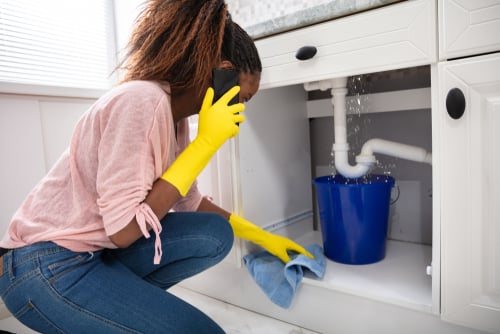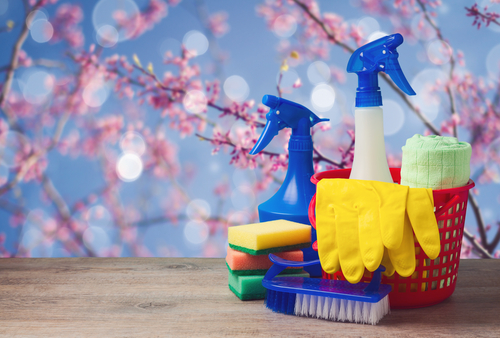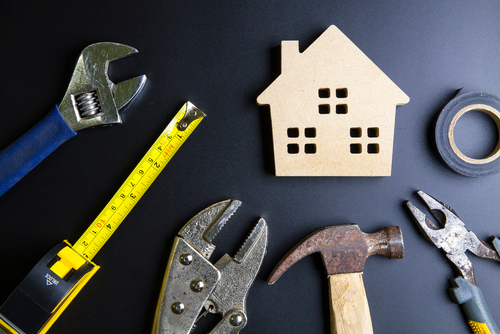Some maintenance and repair tasks are easy enough to do on your own. That said, for a clogged sink in your rental, there’s typically no need to call a repairer or a specialist. Instead, a few different methods allow you to unclog a sink on your own quite easily. Thus, if you’re unfamiliar with fixing maintenance issues in your rental, don’t panic. Instead, keep reading while we go over some warning signs and how you can unclog a sink on your own.
Warning Signs of a Clogged Sink
Clogged sinks are relatively common in homes and rental properties. However, if you aren’t careful about what you put down your drain, it could result in repair bills or more extensive damages.
Luckily, this basic maintenance issue doesn’t typically go unnoticed for long. Instead, there are a few warning signs that pop up, indicating when your sink may be clogged.
For example, some of the most common signs of a clogged sink include:
- Sudden or Persistent Foul Odors
- Slow Draining Liquids
- Liquids Not Draining at All
You may have a clog if you notice any of these signs in your kitchen or bathroom sink. Next, we’ll go over some of the common causes of sink clogs.
Common Causes of Sink Clogs

As stated above, bathroom and kitchen sink clogs are relatively common in homes and rental properties. That said, there are a number of reasons clogs occur. However, there are three leading causes, including:
- Food and Grease
- Hair
- Other Objects
It’s important to note that nothing should go down your drain besides water and other thin, drain-safe liquids. You may think it’s not necessary to take care of your kitchen and bathroom drains diligently, but it is.
If you notice that your sinks are slowly or not draining at all, think back to what items you put down the drain. Then, take action promptly to ensure further damages don’t take over.
How to Prevent Clogs in Your Rental Home
The first step in resolving clogs in your rental home is preventing them from happening in the first place. As we mentioned before, one of the most common causes of kitchen sink clogs is food and grease. Therefore, to avoid clogs, it’s important to avoid pouring any oils, grease or fat down the drain in your kitchen.
Secondly, another common clog for bathroom drains is hair. Hair collects along with soap and other residues to create stubborn clogs. To avoid hair clogs, drain guards can help catch hair and other objects before they fall down the drain and create a blockage.
Finally, small objects may also create clogs within your kitchen or bathroom sinks. Remember that the only thing meant to go down the drain is liquids. Never pour objects such as coffee grounds, eggshells, produce stickers, paper towels, small toys, paint, medications, or other similar substances down your drains.

Supplies You’ll Need to Unclog a Sink
- Rubber Gloves
- Sink Plunger
- Baking Soda
- White Vinegar
- Drano
- Hex Key
- Flex Drain Snake
- Hang Auger
Simple DIY Methods to Unclog a Sink
Typically, you won’t need a technician to come in and fix a clog in a rental property unless it’s severe. Luckily, there are several DIY methods that tenants and rental owners can use to fix simple maintenance issues. Check out these five simple DIY techniques you can use to unclog a sink in your kitchen or bathroom.
- Plunge the Sink
- Dissolve the Clog
- Use Chemical Solutions
- Hand Tools
- Check the Disposal
Plunge the Sink
The first method we’ll go over is plunging your clogged sink. To do this, you’ll need rubber gloves, a sink plunger, and around 2 inches of standing water in the sink. Once you have everything ready, you’ll want to start by placing the plunger on top of the clogged drain with enough water to submerge it slightly. Then, keeping it sealed tightly around the drain, begin plunging the sink drain up and down rapidly.
For some clogs, this is all you’ll need to do to unclog the drain and allow liquids to pass through. However, if this method does not work, it’s time to move on and try something else.
Dissolve the Clog
Next, if plunging the sink doesn’t work, you can try to dissolve the clog with baking soda and white vinegar. This combination of ingredients can free clogs less abrasive than some chemical solutions.
For this method, it’s essential to start with an empty sink. So, if you have standing water in the sink that won’t drain, you’ll want to use a cup or a wet-dry vacuum to remove as much of the water as possible.
Once you have the sink emptied, the first step is to pour a cup of baking soda directly into the drain. Then, follow that with one cup of white vinegar, cover the drain with a rubber stopper, and leave it for around 15 minutes before removing the plug. Once you’ve removed the stopper, run very hot water down the drain to clear the clog.
Use Chemical Solutions
Sometimes, natural remedies aren’t enough to clear tough clogs. If the first two methods aren’t working properly, you’ll want to use a chemical solution called Drano. Since chemical solutions can be harsher on pipes, following directions properly is crucial.
When using this method, you’ll want to remove as much standing water as possible from the sink. Then, pour about a quarter cup of undiluted Drano into the drain and let it sit for around 15-30 minutes before pouring hot water down the drain. This should clear stubborn clogs, but if not, we have a few other methods to try.
Hand Tools
If you have hair or other objects stuck in the drain and nothing else is working to unclog it, you’ll want to grab a few tools. We suggest using a hand auger or a flex snake for this method. You can find these items on Amazon or your local hardware store.
The first thing you’ll want to do with a hand auger is thread the cable into the drain and continue until you reach the clogged area. Then, allow a little bit of slack and start turning the device’s hand crank. Once you feel the auger break through the clog, slowly retract the cable and flush the pipes with hot tap water.
Now, if you don’t feel any resistance when feeding the cable down the drain, it may mean that the clog is further down in the pipe. If that’s the case, you may need to remove sections of the pipe underneath the sink to reach the blockage. That said, you shouldn’t try to remove piping sections by yourself. If you cannot get the clog with your hand tools, stop and call your Washington DC property management professionals for assistance.
Check the Garbage Disposal
The last method we are going over today is checking your garbage disposal. Although garbage disposals offer a lot of conveniences, they are only helpful if they’re used properly. Unfortunately, if you don’t maintain your garbage disposal, it can quickly become clogged.
If your sink is clogged and you have a garbage disposal, running it may dissolve the clog. On the other hand, if the disposal is not working correctly, you’ll want to check underneath the sink and start by turning off the power to the disposal. Then, press the reset button before turning the disposal back on.
Once you’ve reset the disposal, try turning it back on to see if the blockage clears. If nothing happens, turn off the power again. Then, get out your hex key and manually turn the impellers in one direction and then the other to dislodge any obstructions.
If this doesn’t work to remove the clog from your sink, it’s time to contact a maintenance professional to help you.
Need Help Managing Your Rental Property?

Rental properties require both preventative maintenance and occasional repairs. For busy investors, a DIY fix is not always possible or the best solution.
At Bay Property Management Group, our team of professionals and extensive list of third-party vendors can handle any maintenance need.
That said, the benefits of hiring a local property manager do not end there. We also step in to handle other day-to-day tasks, such as tenant screening, rent collection, rental registration, and more.
If you are interested in learning how full-service rental management can maximize your investment, contact us today. We proudly serve owners throughout Maryland, Pennsylvania, Northern Virginia, Washington DC, and other surrounding counties.
